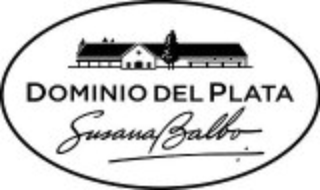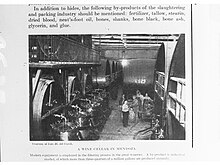
Malbec is a purple grape variety used in making red wine. The grapes tend to have an inky dark color and robust tannins, and are known as one of the six grapes allowed in the blend of red Bordeaux wine. In France, plantations of Malbec are now found primarily in Cahors in South West France, though the grape is grown worldwide. It is increasingly celebrated as an Argentine varietal.

Chile has a long history in the production of wine, with roots dating back to the 16th century when the Spanish conquistadors introduced Vitis vinifera vines to the region. In the mid-19th century, French wine varieties such as Cabernet Sauvignon, Merlot, Carmenère, and Franc were introduced. During the early 1980s, the Chilean wine industry underwent a renaissance with the introduction of stainless steel fermentation tanks and the use of oak barrels for aging. This led to a rapid growth in exports as quality wine production increased. The number of wineries in Chile rose from 12 in 1995 to over 70 in 2005.

Mendoza, officially the City of Mendoza, is the capital of the province of Mendoza in Argentina. It is located in the northern-central part of the province, in a region of foothills and high plains, on the eastern side of the Andes. As of the 2010 census [INDEC], Mendoza had a population of 115,041 with a metropolitan population of 1,055,679, making Greater Mendoza the fourth largest census metropolitan area in the country.

Argentina is the fifth largest producer of wine in the world. Argentine wine, as with some aspects of Argentine cuisine, has its roots in Spain. During the Spanish colonization of the Americas, vine cuttings were brought to Santiago del Estero in 1557, and the cultivation of the grape and wine production stretched first to neighboring regions, and then to other parts of the country.

The Walla Walla Valley AVA is an American Viticultural Area located within Washington state and extending partly into the northeastern corner of Oregon. The wine region is entirely included within the larger Columbia Valley AVA. In addition to grapes, the area produces sweet onions, wheat and strawberries. After the Yakima Valley AVA, the Walla Walla AVA has the second highest concentration of vineyards and wineries in Washington State. Walla Walla hosts about 140 wineries.
Luján de Cuyo is the district capital of the Luján de Cuyo Department located in the west of the Mendoza Province of Argentina. It forms part of the Greater Mendoza metropolitan area.

The Buenos Aires Province has become a producer of premium wines during the first decade of the 21st century. Vineyards are located at the southern part of the province, specially around Médanos. The activity was pioneered in lands previously dedicated to garlic and pastures. Wine from Médanos won a Silver Medal in the 2009 Decanter World Wine Awards, the world's largest wine contest celebrated in London.

An international variety is a grape variety that is widely planted in most of the major wine producing regions and has widespread appeal and consumer recognition. These are grapes that are highly likely to appear on wine labels as varietal wines and are often considered benchmarks for emerging wine industries. There is some criticism that the popularity of so-called international varieties comes at the price of a region's indigenous varieties. The majority of declared international varieties are French in origin, though in recent years the popularity of Spanish and Italian varietals has seen an increase in worldwide plantings and these may also be considered "international varieties".

Trapiche is a winery in Mendoza, Argentina. It was founded in 1883 and consists of over 1000 hectares between several Mendoza vineyards. It is a two-time winner of the International Wine and Spirit Competition Argentine Wine Producer of the Year award, and is the largest producer of wine in Argentina. Trapiche is owned by Grupo Peñaflor, one of the first ten wine producers in the world.
Valle de Uco is a viticultural region southwest of Mendoza, in Argentina. Situated along the Tunuyán River, the Uco Valley is widely considered one of the top wine regions in Mendoza, and all of Argentina. The annual average temperature is 14 °C (57 °F) and altitudes range from 900–1,200 metres (3,000–3,900 ft) above sea level.

Bodega Catena Zapata is a family-owned winery located in Mendoza, in the sub appellation of Agrelo, Argentina. The winery structure is distinguished by its pyramid-like design based on Mayan architecture.
Cono Sur Vineyards & Winery is a subsidiary of Concha y Toro Winery and is the third largest exporter of bottled wine in Chile. Established in 1993, its name is a reference to its location in the Southern Cone of South America and a play on the word connoisseur. In 2015, it was the official wine of the Tour de France.

Chakana Winery was founded on, in Agrelo, Lujan de Cuyo, Mendoza, Argentina by Juan Pelizzatti. Chakana is a family-owned winery located 960 meters above sea level in the Andes Mountains' foothills.

Dominio del Plata is a medium-sized winery located in the Lujan de Cuyo region of Mendoza Argentina. It was founded in 1999 by enologist and entrepreneur Susana Balbo.
Bodega Riglos is an Argentine producer of premium wines from Gualtallary, Tupungato, Alto Valle de Uco, Mendoza, located at 4,000 ft above sea level.

Lagarde or Bodega Lagarde is a family-owned winery located in the Luján de Cuyo Department located in the west of the Mendoza Province, Argentina and was founded in 1897. Lagarde consists of five Mendoza vineyards and is currently owned and managed by the Pescarmona family. The winery is currently run by the third generation Pescarmonas: Sofia Pescarmona and Lucila Pescarmona, with Juan Roby Stordeur as the winemaker since 2002.
Jose "Pepe" Galante is an Argentine winemaker in the Uco Valley, Mendoza. He is considered by many to be the father of modern wine making in Argentina.

The Adrianna vineyard, planted at almost 5,000’ elevation in the Andes foothills, lies on the westernmost border of Tupungato Alto, Mendoza, Argentina, in a small district called Gualtallary. It belongs to the Bodega Catena Zapata. Being the highest vineyard in Mendoza, it benefits from the cooling effect of the Andes Mountains and intense sunlight resulting from extreme high altitude. The increased sunlight intensity due to altitude translates into thicker grape skins, because the grapevine attempts to protect its seeds from the sun. Grape skins are rich in tannins and polyphenols, the flavour-giving compounds in wine, explaining why the Adrianna Vineyard's high-altitude wines are so concentrated and capable of ageing. Also, because of the cool mountain climate, the wines from Adrianna have a certain type of minerality in the aromatics and palate that is not found in wines from other parts of Mendoza. The soils of Catena Zapata´s Adrianna Vineyard are composed of limestone and large pebbles that make them particularly well drained; the yields are naturally low and berries are small and concentrated Adrianna is possibly the world’s most studied vineyard. The Adrianna Vineyard is well known for its single parcel Chardonnay wines White Bones and White Stones. and its Malbec, which have been highly reviewed by world wine publications
Terrazas de los Andes is a winery located in Luján de Cuyo in the province of Mendoza, Argentina.
Bolivian wine includes red wines, white wines, dessert wines, fortified wines, and sparkling wines. Bolivia is not a well-know wine country, however there are small wine factories. The wine industry of Bolivia is based in south-center city of Tarija, which 80% of country's total vineyard is located.















